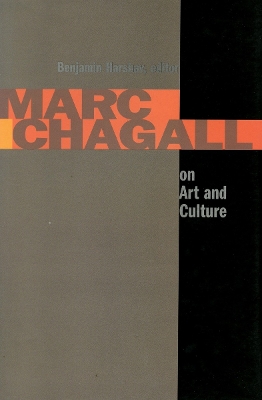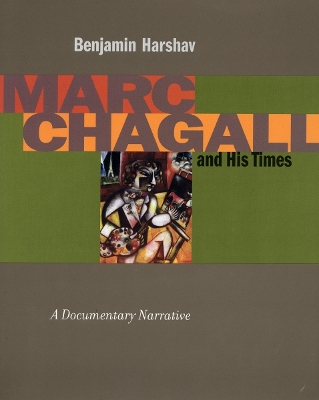Contraversions: Jews and Other Differences
2 total works
Marc Chagall (1887-1985) traversed a long route from a boy in the Jewish Pale of Settlement, to a commissar of art in revolutionary Russia, to the position of a world-famous French artist. This book presents for the first time a comprehensive collection of Chagall's public statements on art and culture. The documents and interviews shed light on his rich, versatile, and enigmatic art from within his own mental world. The book raises the problems of a multi-cultural artist with several intersecting identities and the tensions between modernist form and cultural representation in twentieth-century art. It reveals the travails and achievements of his life as a Jew in the twentieth century and his perennial concerns with Jewish identity and destiny, Yiddish literature, and the state of Israel. This collection includes annotations and introductions of the Chagall texts by the renowned scholar Benjamin Harshav that elucidate the texts and convey the changing cultural contexts of Chagall's life. Also featured is the translation by Benjamin and Barbara Harshav of the first book about Chagall's work, the 1918 Russian The Art of Marc Chagall.
This book presents a new and comprehensive biography of one of the most prominent artists of the twentieth century in dialogue with the events and ideologies of his time. It encompasses the 98 years of Chagall’s life (1887-1985) in Russia, France, the US, as well as Germany and Israel, his deep roots in folk culture, his personal relationships and loves, his involvement with the art of the Russian Revolution, with Surrealism, Communism, Zionism, Yiddish literature and the state of Israel. The book exposes the complex relationships between Chagall’s three cultural identities: Jewish-Russian-French. Indeed, it is a biography of the turbulent times of the twentieth century and the transformations of a Jew in it, his meteoric rise from the “ghetto” of the Russian Pale of Settlement to the centers of modern culture.
The book reveals Chagall’s endless curiosity, his forays in many directions beyond painting and drawing: public art, theater and ballet, stained glass windows in churches and synagogues, lithographs, etchings, and illustrations of literature and the Bible. We observe the intricate relations between Chagall’s life and consciousness and the impact of his life on the iconography of his art. Thus, the book provides an indispensable key to the understanding of Chagall’s often enigmatic art. Indeed, it is a contribution to the understanding of some of the central problems of Modern art, such as the question of originality, the interaction between the formal discoveries of the avant-garde and cultural or multi-cultural representation, and the relations between an artist’s art and his personal biography.
Renowned Israeli-American scholar Benjamin Harshav presents the first comprehensive investigation of Marc Chagall’s life and consciousness after the classic 1961 biography by Chagall’s son-in-law Franz Meyer. Harshav’s narrative includes hundreds of private letters and documents written by Chagall and his contemporaries in Russian, Yiddish, French, English and other languages, translated by Benjamin and Barbara Harshav into English, and placed in their personal and historical context.

